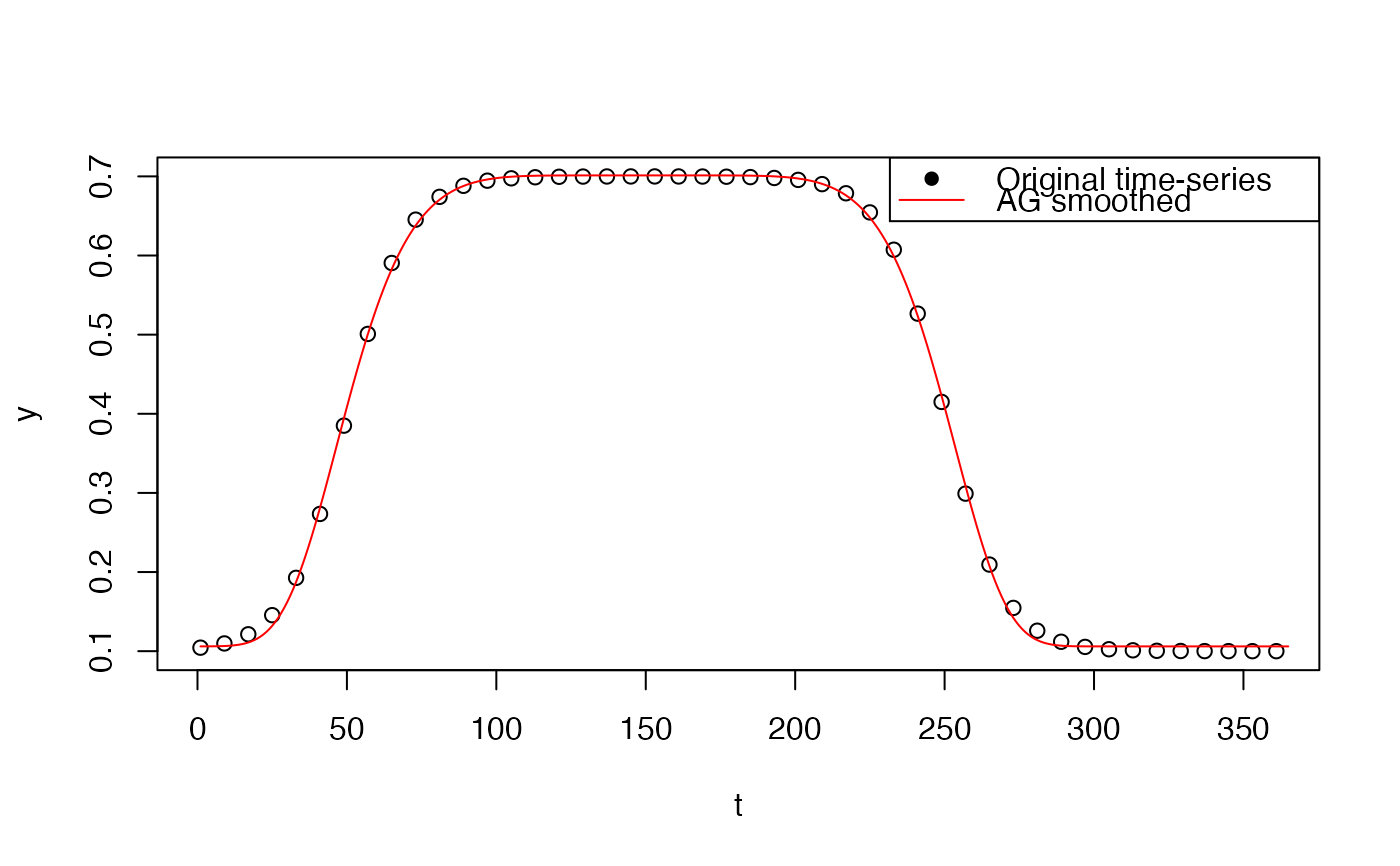Fine curve fitting function is used to fit vegetation time-series in every growing season.
FitDL.Zhang(y, t = index(y), tout = t, method = "nlm", w, ...) FitDL.AG(y, t = index(y), tout = t, method = "nlminb", w, ...) FitDL.AG2(y, t = index(y), tout = t, method = "nlminb", w, ...) FitDL.Beck(y, t = index(y), tout = t, method = "nlminb", w, ...) FitDL.Elmore(y, t = index(y), tout = t, method = "nlminb", w, ...) FitDL.Gu(y, t = index(y), tout = t, method = "nlminb", w, ...) FitDL.Klos(y, t = index(y), tout = t, method = "BFGS", w, ...)
Arguments
| y | input vegetation index time-series. |
|---|---|
| t | the corresponding doy(day of year) of y. |
| tout | the time of output curve fitting time-series. |
| method | method passed to |
| w | weights |
| ... | other paraters passed to |
Value
tout: The time of output curve fitting time-series.zs: Smoothed vegetation time-series of every iteration.ws: Weights of every iteration.par: Final optimized parameter of fine fitting.fun: The name of fine fitting.
References
Beck, P.S.A., Atzberger, C., Hogda, K.A., Johansen, B., Skidmore, A.K., 2006. Improved monitoring of vegetation dynamics at very high latitudes: A new method using MODIS NDVI. Remote Sens. Environ. https://doi.org/10.1016/j.rse.2005.10.021.
Elmore, A.J., Guinn, S.M., Minsley, B.J., Richardson, A.D., 2012. Landscape controls on the timing of spring, autumn, and growing season length in mid-Atlantic forests. Glob. Chang. Biol. 18, 656-674. https://doi.org/10.1111/j.1365-2486.2011.02521.x.
Gu, L., Post, W.M., Baldocchi, D.D., Black, TRUE.A., Suyker, A.E., Verma, S.B., Vesala, TRUE., Wofsy, S.C., 2009. Characterizing the Seasonal Dynamics of Plant Community Photosynthesis Across a Range of Vegetation Types, in: Noormets, A. (Ed.), Phenology of Ecosystem Processes: Applications in Global Change Research. Springer New York, New York, NY, pp. 35-58. https://doi.org/10.1007/978-1-4419-0026-5_2.
https://github.com/cran/phenopix/blob/master/R/FitDoubleLogGu.R
Examples
#> Error in library(phenofit): there is no package called ‘phenofit’# simulate vegetation time-series fFUN = doubleLog.Beck par = c( mn = 0.1, mx = 0.7, sos = 50, rsp = 0.1, eos = 250, rau = 0.1) t <- seq(1, 365, 8) tout <- seq(1, 365, 1) y <- fFUN(par, t) methods <- c("AG", "Beck", "Elmore", "Gu", "Zhang") r <- FitDL.AG(y, t, tout)#>#>legend('topright', c('Original time-series', 'AG smoothed'), lty = c(0, 1), pch = c(16, NA), col = c("black", "red"))
